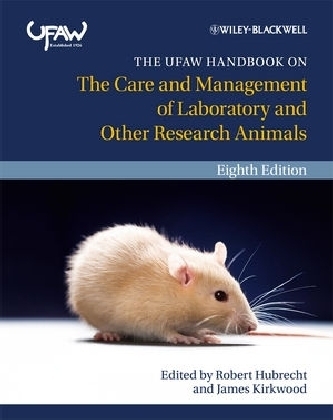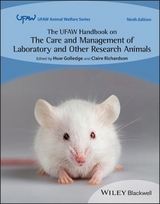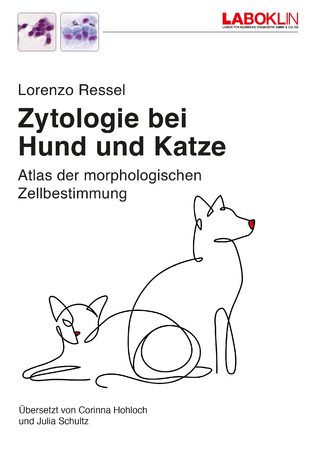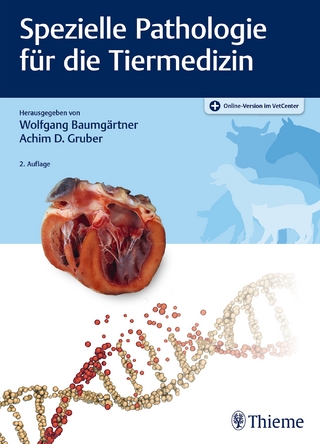
The UFAW Handbook on the Care and Management of Laboratory and Other Research Animals
Wiley-Blackwell (Verlag)
978-1-4051-7523-4 (ISBN)
- Titel erscheint in neuer Auflage
- Artikel merken
The seminal reference on the care of laboratory and captive animals, The UFAW Handbook on the Care and Management of Laboratory and Other Research Animals is a must-have for anyone working in this field. The UFAW Handbook has been the definitive text since 1947. Written for an international audience, it contains contributions from experts from around the world. The book focuses on best practice principles throughout, providing comprehensive coverage, with all chapters being peer reviewed by anonymous referees. As well as addressing the husbandry of laboratory animals, the content is also of great value to zoos and aquaria. Changes for the eighth edition:
Revised and updated to reflect developments since publication of the previous edition.
New chapters on areas of growing concern, including: the 3Rs; phenotyping; statistics and experimental design; welfare assessment; legislation; training of people caring for lab animals; and euthanasia.
All material combined into one volume for ease of reference.
This book is published on behalf of UFAW (The Universities Federation for Animal Welfare), with whom we also publish the UFAW/Wiley-Blackwell Animal Welfare Book Series. This major series of books provides an authoritative source of information on worldwide developments, current thinking and best practice in the field of animal welfare science and technology. For details of all of the titles in the series see www.wiley.com/go/ufaw.
Robert Hubrecht BSc PhD CBiol FIBiol is Deputy Scientific Director of the Universities Federation for Animal Welfare (UFAW). James Kirkwood BVSc PhD CBiol FIBiol MRCVS is Chief Executive and Scientific Director of UFAW. UFAW is an internationally recognised, independent, scientific and educational animal welfare charity concerned with improving knowledge and understanding of animals’ needs in order to promote high standards of welfare for farm, companion, laboratory, captive wild animals and those with which we interact in the wild.
Contributors. Foreword (Ian Kimber).
1 Introduction (Robert Hubrecht and James Kirkwood).
Part 1 Implementing the Three Rs in research using animals.
2 The Three Rs (Jon Richmond).
3 The design of animal experiments (Michael F.W. Festing).
4 Introduction to laboratory animal genetics (Michael F.W. Festing and Cathleen Lutz).
5 Phenotyping of genetically modified mice (Rikke Westh Thon, Merel Ritskes-Hoitinga, Hilary Gates and Jan-Bas Prins).
6 Brief introduction to welfare assessment: a ‘toolbox’ of techniques (Naomi Latham).
7 Welfare and ‘best practice’ in field studies of wildlife (Julie M. Lane and Robbie A. McDonald).
8 Legislation and oversight of the conduct of research using animals: a global overview (Kathryn Bayne, Timothy H. Morris and Malcolm P. France).
9 Planning, design and construction of efficient animal facilities (Barbara Holgate).
10 Enrichment: animal welfare and experimental outcomes (Robert Hubrecht).
11 Special housing arrangements (Mike Dennis)
12 Refinements in in-house animal production and breeding (Roger Francis).
13 Transportation of laboratory animals (William J. White, Sonja T. Chou, Carl B. Kole and Roy Sutcliffe).
14 Nutrition, feeding and animal welfare (Bart Savenije, Jan Strubbe and Merel Ritskes-Hoitinga).
15 Attaining competence in the care of animals used in research (Bryan Howard and Timo Nevalainen).
16 Positive reinforcement training for laboratory animals (Gail Laule).
17 Euthanasia and other fates for laboratory animals (Sarah Wolfensohn).
Part 2 Species kept in the laboratory Mammals.
18 Wild mammals (Ian R. Inglis, Fiona Mathews and Anne Hudson).
19 The laboratory opossum (John L. VandeBerg and Sarah Williams-Blangero).
20 Tree shrews (Eberhard Fuchs and Silke Corbach-Söhle).
Rodentia and Lagomorpha
21 The laboratory mouse (Vera Baumans).
22 The laboratory rat (Jaap M. Koolhaas).
23 The laboratory gerbil (Eva Waiblinger).
24 The Syrian hamster (David Whittaker).
25 The husbandry and welfare of non-traditional laboratory rodents (Chris Sherwin).
26 Voles (Jonathan J. Cooper).
27 The guinea pig (Sylvia Kaiser, Christine Krüger and Norbert Sachser).
28 The laboratory rabbit (Lena Lidfors and Therese Edström).
Carnivora.
29 The ferret (Michael Plant and Maggie Lloyd).
30 The laboratory dog (Judy MacArthur Clark and C. Jane Pomeroy).
31 The domestic cat (Sandra McCune).
Ungulates.
32 Pigs and minipigs (Wolfgang Holtz).
33 Cattle (Roger Ewbank).
34 Sheep and goats (Colin L. Gilbert and Keith M. Kendrick).
35 The horse (Fernando Montesso).
Non-Human Primates.
36 Marmosets and tamarins (Hannah M. Buchanan-Smith).
37 Squirrel monkeys (Lawrence E. Williams, Alan G. Brady and Christian R. Abee).
38 Capuchin monkeys (James R. Anderson and Elisabetta Visalberghi).
39 Old World monkeys (Sarah Wolfensohn).
40 Chimpanzees (Steven J. Schapiro and Susan P. Lambeth).
Birds.
41 The domestic fowl (Ian J.H. Duncan).
42 The Japanese quail (Kimberly M. Cheng, Darin C. Bennett and Andrew D. Mills).
43 The zebra finch (Ruedi G. Nager and Graham Law).
44 Pigeons and doves (Anthony McGregor and Mark Haselgrove).
45 The European starling (Melissa Bateson and Lucy Asher).
Reptiles and Amphibia.
46 Terrestrial reptiles: lizards, snakes and tortoises (John E. Cooper).
47 Aquatic reptiles (Simon Tonge).
48 Amphibians, with special reference to Xenopus Richard Tinsley
Fish.
49 Fish (James F. Turnbull and Iain Berrill).
Cephalopoda.
50 Cephalopoda (Bernd U. Budelmann).
Index.
| Erscheint lt. Verlag | 19.3.2010 |
|---|---|
| Verlagsort | Hoboken |
| Sprache | englisch |
| Maße | 231 x 285 mm |
| Gewicht | 2359 g |
| Themenwelt | Veterinärmedizin ► Klinische Fächer ► Pathologie |
| Veterinärmedizin ► Klinische Fächer ► Versuchstiere | |
| ISBN-10 | 1-4051-7523-0 / 1405175230 |
| ISBN-13 | 978-1-4051-7523-4 / 9781405175234 |
| Zustand | Neuware |
| Informationen gemäß Produktsicherheitsverordnung (GPSR) | |
| Haben Sie eine Frage zum Produkt? |
aus dem Bereich



